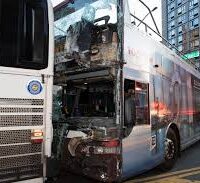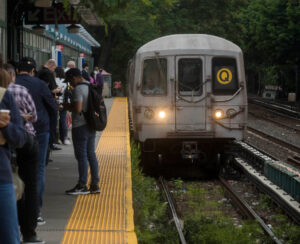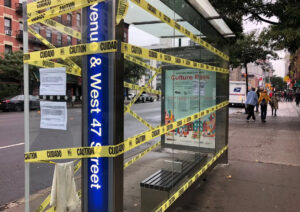Bus Crash in New York: Common MTA Accident Scenarios

Introduction
Every day, thousands of New Yorkers rely on the Metropolitan Transportation Authority (MTA) network, which includes buses, subways, and trains. While these modes of transport are generally safe and efficient, accidents can and do happen. These incidents often leave victims facing severe injuries, emotional distress, and unexpected financial burdens. Understanding the common scenarios in which MTA accidents occur is essential for anyone who uses public transportation. At Cohan Law Firm, we are committed to guiding you through the legal complexities following an MTA accident and helping you pursue the compensation you deserve.
Common MTA Accident Scenarios
Bus Crashes in New York
Public buses are a lifeline for millions of commuters across New York City. However, when accidents occur, the consequences can be devastating. Common scenarios include:
- Driver negligence: Bus drivers may speed, become distracted by mobile devices, ignore traffic signals, or fail to yield to pedestrians.
- Mechanical failures: Poor maintenance, faulty brakes, or engine malfunctions can contribute to sudden accidents.
- Hazardous road conditions: Potholes, debris, icy roads, or poor visibility during storms can increase the risk of crashes.
- Collisions with other vehicles or pedestrians: Buses share congested city streets with cars, bicycles, and pedestrians, creating ample opportunities for accidents.
If you’re seeking legal support for a bus crash in New York, visit our dedicated page on New York Bus Accident Lawyer.
Consider a scenario where a bus driver, distracted by a conversation with passengers, runs a red light and collides with a taxi. Multiple passengers on the bus suffer injuries, ranging from broken bones to concussions. In such cases, victims may have grounds to pursue compensation for medical bills, lost wages, and pain and suffering.
Train and Subway Accidents
New York’s iconic subway and commuter trains are vital for the city’s daily life. However, risks exist both onboard and in stations:
- Platform injuries: Slippery or uneven platforms, poor lighting, or broken tiles can lead to slip-and-fall accidents.
- Sudden stops or derailments: Operator error, equipment failure, or track issues may cause abrupt stops or even derailments.
- Electrical hazards: Exposed wiring, power surges, or malfunctioning doors can result in serious injuries.
- Crowd-related injuries: Overcrowding during rush hours can cause pushing, shoving, and accidental falls.
For example, imagine a packed subway car during the morning commute. A sudden lurch due to an emergency stop throws several passengers to the floor, causing sprains and fractures. A train accident lawyer can evaluate such cases and pursue legal action to secure rightful compensation.

Accidents at Bus Stops and Stations
Many MTA-related injuries occur off the vehicle itself:
- Bus stop hazards: Uneven pavements, accumulated ice, or debris can cause passengers to trip and fall while waiting.
- Station injuries: Poorly maintained escalators or elevators, dim lighting, or broken steps create dangerous conditions.
- Assaults or criminal acts: Inadequate security measures may leave passengers vulnerable to attacks or theft.
For instance, a passenger waiting at a dimly lit bus stop may slip on accumulated ice and suffer a severe back injury. In such cases, a bus accident lawyer in New York can help navigate the complex legal process and determine liability.

What Causes MTA Accidents?
Several factors contribute to accidents within the MTA system:
- Negligent operators: Inadequate training, fatigue, or reckless behavior by drivers and conductors can result in tragic accidents.
- Lack of maintenance: Aging infrastructure, delayed repairs, or outdated safety systems can create hazardous conditions.
- Weather-related hazards: Snow, ice, heavy rain, or strong winds can compromise vehicle handling and platform safety.
- Third-party negligence: Sometimes, contractors, other drivers, or external factors contribute to MTA-related accidents.
Victims of these accidents may face a long road to recovery, with mounting medical bills, lost income, and emotional trauma. Seeking experienced legal representation can make a significant difference.
Legal Steps After an MTA Accident
If you or a loved one has been involved in an MTA accident, it’s crucial to act quickly and protect your rights. Follow these steps:
- Seek immediate medical attention. Even if injuries seem minor, medical documentation is essential for any legal claim.
- Report the accident. Notify the MTA, station personnel, or local law enforcement. A formal report provides an official record of the incident.
- Document everything. Take photographs of the scene, note witness information, and keep all receipts and medical records.
- Contact an experienced attorney. An attorney specializing in MTA accidents can evaluate your case, explain your legal rights, and handle negotiations or litigation if necessary.
Want to learn more about how a negligence lawyer can build a strong case after a public transit accident? Visit this detailed article for further insights.
Why You Need an Experienced MTA Accident Attorney
Navigating a claim against the MTA involves complex rules and strict deadlines. The New York City Transit Authority (NYCTA), which operates subways and buses, has a Notice of Claim requirement that must be filed within 90 days of the accident. Missing this window can result in losing your right to seek compensation.
An experienced attorney from Cohan Law Firm can:
- Identify responsible parties (MTA, third-party contractors, other drivers).
- Gather crucial evidence, including surveillance footage and maintenance records.
- Consult with medical and accident reconstruction experts to build a strong case.
- Handle negotiations and fight for maximum compensation, whether through settlement or court action.
Compensation You May Be Entitled To
Victims of MTA accidents may be eligible for compensation covering:
- Medical expenses (emergency treatment, ongoing care, rehabilitation).
- Lost income and reduced earning capacity.
- Pain and suffering, emotional distress, and diminished quality of life.
- Property damage (e.g., damaged personal items in the accident).
FAQs about MTA Accidents and Legal Claims
Q: What should I do immediately after an MTA accident?
A: Seek medical care, report the incident, document the scene, and contact a qualified attorney as soon as possible.
Q: How long do I have to file a claim against the MTA?
A: You must file a Notice of Claim within 90 days of the accident to preserve your right to seek compensation.
Q: Can I file a claim if I was partially at fault?
A: Yes. New York follows a comparative negligence rule, meaning you can still recover damages even if you were partially at fault, though your compensation may be reduced.
Q: What if the accident was caused by bad weather?
A: While weather can contribute to accidents, the MTA is responsible for maintaining safe operations. An attorney can determine liability based on specific circumstances.
Q: How much compensation can I receive?
A: Compensation depends on the severity of injuries, financial losses, and the impact on your life. A skilled attorney can help maximize your recovery.
Free Consultation with a Bus Accident Lawyer
If you or someone you love has been injured in a bus accident in New York or any MTA accident, you don’t have to face the complexities of the legal system alone. Contact Cohan Law Firm today for a free consultation and let us help you understand your rights and pursue the compensation you deserve.
Call us now or visit cohanlegal.com to schedule your consultation.
Disclaimer
This article is for informational purposes only and does not constitute legal advice. It does not create an attorney-client relationship.
